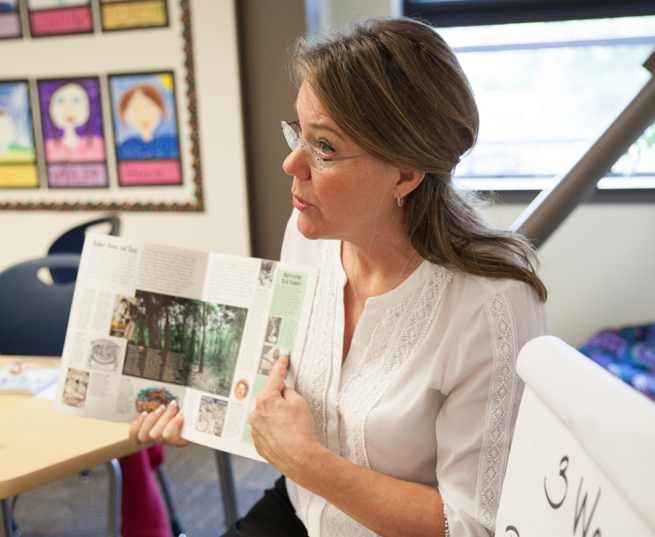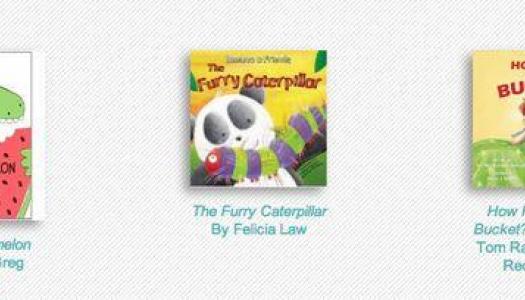Five Tips to Make Focus Lessons Brief
Join Our Community
Access this resource now. Get up to three resources every month for free.
Choose from thousands of articles, lessons, guides, videos, and printables.
 As a teacher, you probably love stories, and your students do, too. Occasionally, you might use a read-aloud in a brief focus lesson to illustrate a strategy. The natural inclination might be to keep going with your chosen read-aloud during the whole-group lesson. However, because of the time constraints of a brief focus lesson—with the number of minutes equal to the age of the children in the group—reading the entire story is not always possible. When the time of the lesson exceeds the length that students can attend to it, anticipate that students’ eyes will glaze over and their minds will be elsewhere.
As a teacher, you probably love stories, and your students do, too. Occasionally, you might use a read-aloud in a brief focus lesson to illustrate a strategy. The natural inclination might be to keep going with your chosen read-aloud during the whole-group lesson. However, because of the time constraints of a brief focus lesson—with the number of minutes equal to the age of the children in the group—reading the entire story is not always possible. When the time of the lesson exceeds the length that students can attend to it, anticipate that students’ eyes will glaze over and their minds will be elsewhere.
A brief focus lesson is designed to illustrate how to use a target strategy, not to teach a certain text. In the lesson, you want to convey the urgency of understanding and applying the strategy instead of exploring every aspect of the book. Consider if one of the following options might work better for your brief focus lessons that feature a read-aloud:
- Share the text in advance: A day or two before your brief focus lesson, share the text you will use in its entirety. Encourage students to listen for enjoyment. You can inform them that you will be revisiting the text a little later in the week. In this way, they can look forward to hearing part of the text again as part of their strategy instruction.
- Revisit part of a familiar book: Return to a familiar text and feature a short excerpt to illustrate the target strategy. You can share the excerpt by writing it on chart paper, displaying it on a document camera, projecting an electronic book on a whiteboard, using a Smartboard, or featuring a Big Book page. Reinforce that you are using this excerpt to model how to apply a strategy. Remind readers that it is a bonus that they have already heard the story.
- Book-talk the new text and feature an excerpt: If the text is new to students, offer a quick and engaging book talk before using it in a brief focus lesson. Explain that you will not be reading the entire text during the lesson so that students are not disappointed. The good news is that through this introduction, you will whet children’s appetites to read the book or others like it.
- Break the reading up over several days: Remember that the same text can be used to teach different strategies. For example, on the first day of the reading, you might use it to model and reinforce check for understanding. On subsequent days of the week, you can draw examples from the text to teach other strategies that students need. Students will have the opportunity to hear the entire book and practice the strategies you have planned. The advantages are that students enjoy a wonderful piece of children’s literature and hear a rendition delivered by an expert reader: you! They also have the chance to engage in valuable strategy work.
- Select a short text: Articles from children’s magazines and newspapers are examples of short texts that can be used effectively for strategy work. During a brief focus lesson, you can use a one- or two-page spread from a nonfiction text or a poem from a book of children’s verse. Examples of short texts might include an article about a gecko in a nonfiction book about reptiles, a piece about the guitar in a book about musical instruments, or a poem from an anthology.
Ways to Promote Additional Student Reading
Whichever approach to sharing texts during a brief focus lesson you choose, trust that you can promote student reading in the process. Build on student interest in the texts that you have shared during read-aloud. Contemplate how you might use some of the suggestions below to encourage your students to read voraciously.
- After featuring an entire book, an excerpt from the book, a short article, or a poem, make the text available for independent reading. Put it in a place of honor in your classroom. Remind students that it has to be a good fit for them to read it on their own. If you can round up more than one copy of the text (perhaps from your school bookroom), that is even better.
- Once students have gotten a sampling of a text, a few might want to complete it on their own. If the text is too difficult for some children to read independently, locate an audiotaped version through the library or Internet.
- Offer a few texts of varying difficulty levels on the same topic or theme. By accessing websites of well-known children’s book publishers, you can find related texts for students who can read more challenging ones as well as texts for students who need easier books. Another way to build on student interest in voracious reading is to display books of different difficulty levels written by the same author. Enlist the help of your school librarian in finding some of these texts.
- In your weekly newsletter or via your classroom website, create a list of read-alouds shared during the week. Parents can check a book out from the local library or find it in a bookstore for their child. Or, they can enjoy it as a family read-aloud.






